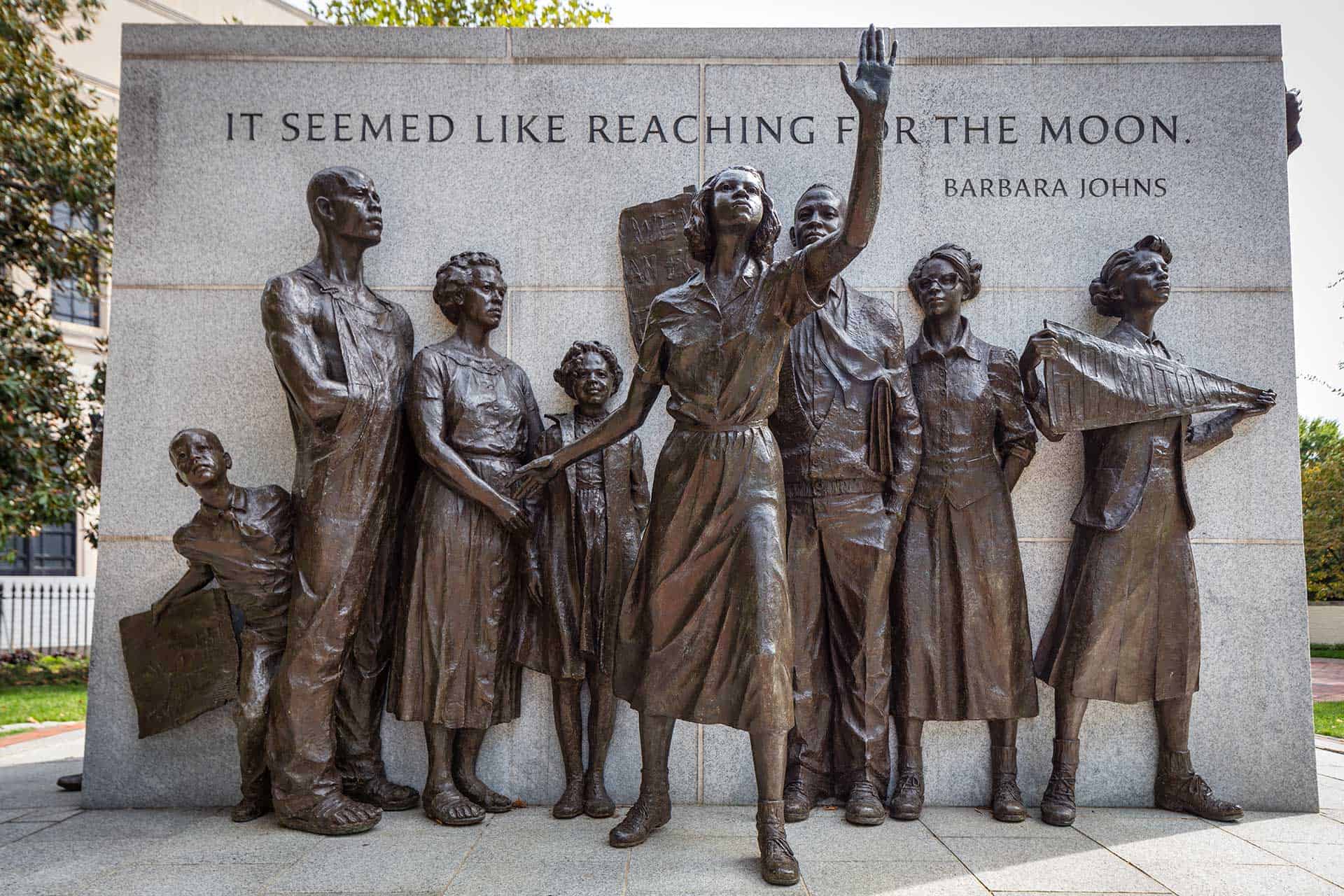“Freedom, a Work in Progress”
The timeline for the Fredericksburg civil rights walking tour begins at the end of the Civil War in 1865. Fredericksburg’s location halfway between Richmond, the capital of the Confederacy, and Washington, D.C., made it the site of intense fighting as Union and Confederate armies advanced and retreated. Enslaved Black people took advantage of the shifting lines to emancipate themselves. During the summer of 1862, over 10,000 enslaved people escaped bondage by crossing the Rappahannock River in and around Fredericksburg. At a national level, in 1865, the 13th Amendment was ratified by the states to abolish chattel slavery “within the United States, or any place subject to their jurisdiction.” To regain federal representation, the former Confederate states, of which Virginia was one, had to ratify the 13th Amendment.
The timeline continues forward to the 20th century and the efforts and influence of James L. Farmer Jr., widely regarded as one of the “Big Four” of the Civil Rights Movement – alongside Dr. Martin Luther King Jr., Roy Wilkins and Whitney Young. Originally from Marshall, Texas, Farmer was considered an academic prodigy when he completed high school at age 14. Barely in his 20s, he graduated from Howard University School of Divinity in Washington, D.C., and then moved to Chicago where he co-founded the Congress of Racial Equality (CORE) in 1942. Through CORE, he organized the first sit-ins in the history of the United States. Years later, from 1985-1998, he was a distinguished professor of history at the University of Mary Washington, located in Fredericksburg, and in 1998 received the Presidential Medal of Freedom.
Farmer was the successful architect of the “Freedom Rides,” a multipronged effort to desegregate interstate bus travel. In 1961, the Fredericksburg Greyhound bus depot was the first stop for the Freedom Riders, a group that started with 13 and grew to over 400 Black and white civil rights activists, who rode regularly scheduled buses through the South to challenge the segregated interstate travel system. They were threatened, brutally attacked, jailed and even firebombed along the way. This treatment persisted despite U.S. Supreme Court decisions barring segregation in seating (1946) and in terminal facilities (1960). Hundreds joined the campaign, prompting the Interstate Commerce Commission to issue new regulations enforcing desegregation.
Fredericksburg’s Civil Rights Trail was created to recognize these places and people who were significant to the Civil Rights Movement. The 21-stop trail has two parts: Part 1 is a 2.6-mile walking tour through Fredericksburg’s historic downtown district. Visitors can start at the Fredericksburg Visitor Center where trail maps are available. Part 2 is a 1.9-mile driving tour that includes stops on the University of Mary Washington campus, Shiloh Cemetery and the Dorothy Hart Community Center.
Along the trail, visitors will see sites where Black people created educational, housing and business opportunities during Jim Crow era segregation, as well as buildings where people protested racial segregation in the 1950s and 1960s. As in the rest of the United States, Fredericksburg’s Civil Rights story continues into the present.












